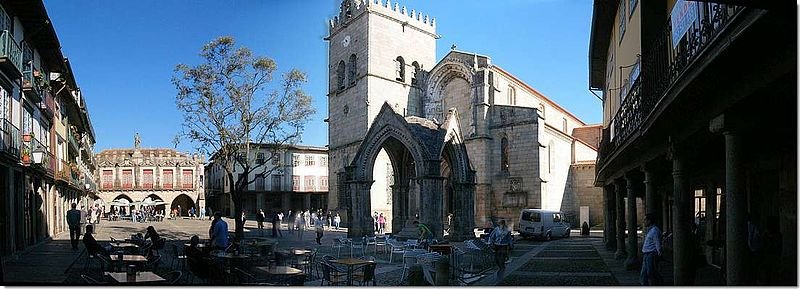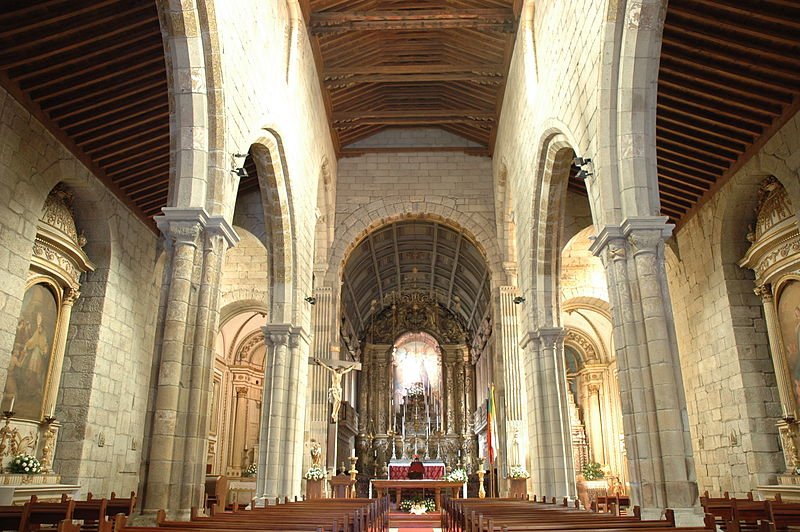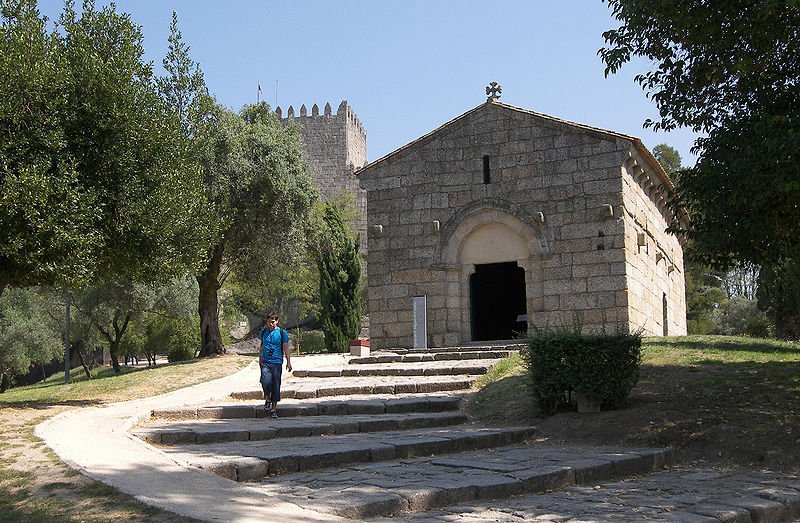
Guimarães, Portugal
Source: https://commons.wikimedia.org/wiki/File:Place_de_l%27olivier_-_panoramic.jpg
Author: Guy MOLL

Guimarães is a small city in Braga District in northern Portugal. Covering 23.5 sq km, the urban area of Guimarães comprises 20 parishes and has a population of about 52,000 (2011 estimate). It is also the seat of the Guimarães municipality, with a population of 163,000.

Igreja de Nossa Senhora da Oliviera, Guimarães
Source: https://commons.wikimedia.org/wiki/File:Guimar%C3%A3es_-_Nossa_Senhora_da_Oliveira_-_Interior.JPG
Author: Josep Renalias

The history of Guimarães goes back to the 9th century, when it was established by the name Vimaranes, a name derived from the warrior Vímara Peres, who chose the area as the seat of the County of Portugal after conquering the Kingdom of Galicia. As such, Guimarães played an important role in the formation of Portugal, and was often referred to as the birthplace of the Portuguese nationality.
The historic center of Guimarães is today a World Heritage Site. There are several important buildings dating from the 19th century, when the city underwent tremendous change to improve on its hygiene and infrastructure.
Going to Guimarães
By PlaneFly to Oporto International Airport (OPO) and from there, catch a train or bus to Guimarães. Oporto Airport gets regular flights from low-cost airlines such as Ryanair and EasyJet.
By Bus
The most convenient way to reach Guimarã from Lisbon is by bus.
By Train
There are only a few trains going to Guimarães from Lisbon. The journey takes about 4 hours.

Capela São Miguel do Castelo, Guimarães
Source: https://commons.wikimedia.org/wiki/File:Guimar%C3%A3es-Capela_S%C3%A3o_Miguel_do_Castelo.jpg
Author: CTHOE

Sights in Guimarães
- Casa de Sezim
- Duke of Braganza Palace
- Guimarães Castle
- Largo da Oliveira
- Museu de Alberto Sampaio
- Museu Martins Sarmento
- Nossa Senhora da Oliveira
- Penha Mountain
- Paço dos Duques
- São Francisco
 Latest updates on Penang Travel Tips
Latest updates on Penang Travel Tips

Copyright © 2003-2025 Timothy Tye. All Rights Reserved.

 Go Back
Go Back